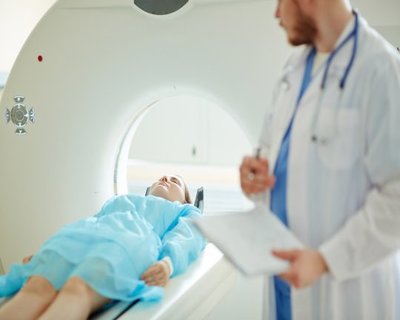- Home
- Editorial
- News
- Practice Guidelines
- Anesthesiology Guidelines
- Cancer Guidelines
- Cardiac Sciences Guidelines
- Critical Care Guidelines
- Dentistry Guidelines
- Dermatology Guidelines
- Diabetes and Endo Guidelines
- Diagnostics Guidelines
- ENT Guidelines
- Featured Practice Guidelines
- Gastroenterology Guidelines
- Geriatrics Guidelines
- Medicine Guidelines
- Nephrology Guidelines
- Neurosciences Guidelines
- Obs and Gynae Guidelines
- Ophthalmology Guidelines
- Orthopaedics Guidelines
- Paediatrics Guidelines
- Psychiatry Guidelines
- Pulmonology Guidelines
- Radiology Guidelines
- Surgery Guidelines
- Urology Guidelines
CT increasingly used for suspected urolithiasis patients in ED, finds study

CT is being increasingly used for suspected urolithiasis patients in ED finds a study. CT utilization rates in the ED continue to increase over time despite government and medical speciality organization initiatives to restrain the growth of advanced imaging service and the same is true for cases of Urolithiasis.
A new study performed in conjunction with the Harvey L. Neiman Health Policy Institute examines changing characteristics of utilization and potential disparities in US emergency department (ED) patients undergoing CT of the abdomen and pelvis (CTAP) for suspected urolithiasis. The study is published online in the Journal of American College of Radiology (JACR).
Urolithiasis is a common disease with increasing prevalence worldwide and lifetime-estimated recurrence risk of over 50%. Imaging plays a critical role in the initial diagnosis, follow-up and urological management of urinary tract stone disease. Unenhanced helical computed tomography (CT) is highly sensitive (>95%) and specific (>96%) in the diagnosis of urolithiasis and is the imaging investigation of choice for the initial assessment of patients with suspected urolithiasis. But its use as a dia diagnostic modality in the emergency Department is yet to be known.
Dr. Balthazar and team used the Nationwide Emergency Department Sample, which is the largest publicly available all-payer ED database in the United States to study patients from 2006 to 2015 with a primary diagnosis of suspected urolithiasis. The annual numbers of ED visits for suspected urolithiasis and associated CTAP examinations per visit were determined along with patient demographics, payer status and hospital characteristics as potential independent predictors of utilization.
"Overall, CT utilization rates in the ED continue to increase over time despite government and medical specialty organization initiatives to restrain the growth of advanced imaging services," stated first author Patricia Balthazar, MD, diagnostic radiology resident, Emory University. "Although the US population grew by 6.9% from 2006 to 2014, the annual ED visits for suspected urolithiasis increased by 17.9%, and the number of visits for suspected urolithiasis involving advanced imaging increased by 100.8%."
"The relative use of CTAP in ED patients presenting with suspected urolithiasis doubled between 2006 and 2014 and showed marked geographic variation," noted Richard Duszak, MD, senior author, and Neiman Institute Affiliate Senior Research Fellow. "Among ED patients with suspected urolithiasis, CTAP was more frequent in patients from higher household income ZIP codes, with private insurance, in the Northeast, and at urban and nonteaching hospitals."
These findings provide important information to practicing clinicians, researchers, and policymakers interested in optimizing the use of advanced medical imaging in the ED.

Disclaimer: This site is primarily intended for healthcare professionals. Any content/information on this website does not replace the advice of medical and/or health professionals and should not be construed as medical/diagnostic advice/endorsement or prescription. Use of this site is subject to our terms of use, privacy policy, advertisement policy. © 2020 Minerva Medical Treatment Pvt Ltd